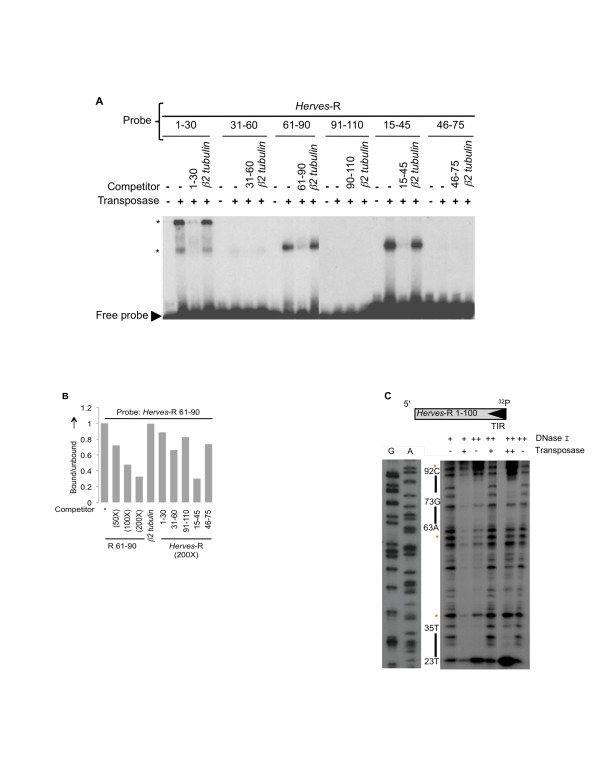Figure 4.
Transposase binding to the Herves-right (R) end. (a) Herves transposase binds to Herves-R bp 1-30, bp 5-45 and bp 61-90. Electrophoretic mobility shift assay (EMSA) analysis of transposase binding to the overlapping 30 bp fragments (bp 1-30, bp 31-60, bp 61-90, bp 91-110, bp 15-45 and bp 46-75). The asterisk (*) indicates various protein DNA complexes. (b) Herves transposase binding to Herves-R bp 15-45 and bp 61-90. The Herves-R bp 61-90 fragment was used as a probe in EMSAs. The fraction of the transposase-bound probe was quantified using a phosphoimager. A homologous fragment was used as specific competitor at a molar excess of 50-fold, 100-fold and 200-fold, whereas non-specific competition was used as described for Figure 2b. Overlapping fragments (bp 1-30, bp 31-60, bp 91-110, bp 15-45, and bp 46-75) were used as competitors of transposase binding to the probe, at 200-fold molar excess. (c) DNase I protection assay of the Herves-R end. The single-end-labeled Herves-R 1-100 bp fragment (100 nM) was incubated in presence (+, ++) or absence (-) of DNase I or the transposase. The ++ indicates 1.4 μM of transposase or 0.5 units of DNase I, whereas + indicates 850 nM of transposase or 0.25 units of DNase I. 32P indicates the end of the probe that was labeled. The solid bars on the sides indicate the region of the probe protected by the transposase. The asterisk (*) indicates hypersensitive sites.

